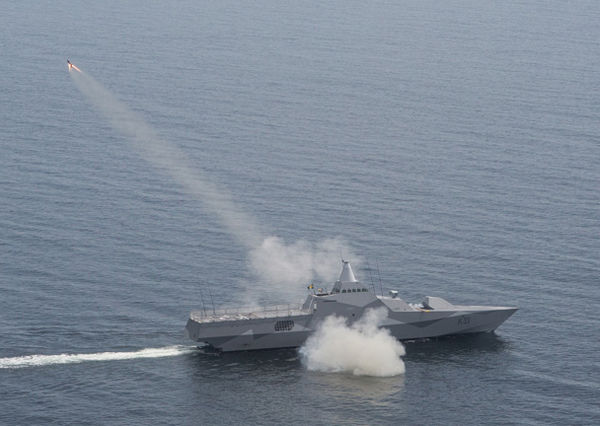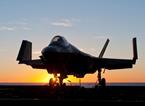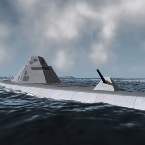Primarchx
Posts: 3102
Joined: 1/20/2013
Status: offline

|
One thing I enjoy a lot in Command is going to guns in ship-to-ship battles. There's a certain satisfaction as your shells get hits and near-misses on a threat and you manuever your ship to bear your guns and keep the return fire to a minimum. However when using naval gunfire you can quickly find yourself in a world of hurt if you don't exercise certain practices.
Here's a quick primer on how I prepare for a gun battle. As the situation develops I'll do the following, before committing to an attack.
1) Know your enemy. Review the database information on the ship(s) you are preparing to engage.
2) Know your ship - armament. What's your primary gun armament? What's it's range? How much damage does each available ammo type do? What targets are those ammo types capable against? How fast does it fire? Is it operational? See how your primary gun armament stacks up against your opponents. You want a range advantage and I wouldn't recommend a naval gun duel at a range disadvantage unless you're either forced to or you're willing to accept return fire and the potential damage that comes with it.
3) Know your ship - available ammunition. How much ammo do you have for your guns? Does your mission, level of opposition and tactical situation allow you to be free with ammo or will its' expenditure be a concern? Is the correct ammo currently loaded on the gun(s) you intend to use?
4) Know your ship - fire arcs. Understand the firing arcs of the weapon(s) you intend to deploy. Baloogan's excellent disambiguation of the Command DBs (see http://baloogancampaign.com/command-documentation/db3000/ and http://baloogancampaign.com/command-documentation/cwdb/) is ESSENTIAL for this. You don't want to barrel in against an opponent only to find that your gun won't fire to the front arc!
5) Know your ship - protection. Does your ship have any particular protective capability, such as armor? Also overall Damage Points are useful in absorbing hits. However fire and flooding can bypass armor and quickly consume, or bypass, Damage Points.
6) Know your ship - gun accuracy. Gun accuracy is given by the CEP value (expressed as a percentage). I believe a lower value = more accurate (tank guns are 4% CEP, MGs/Autocannon are 30%, artillery and most main naval guns are 80% and 16" guns are a whopping 140% for example). IRL, range and CEP size are linked - typically if CEP at range x = 100 then CEP at range x/2 = ~50.
7) Know your ship - gun fire directors. Does your primary gun have local control or is it dependent on a director? Does the director handle more than one weapons (ie, it also guides SAMs, etc)? Is it operational (check damage control)? I haven't found a way to track down what weapons have what associated fire control in the DBs yet, but you'll often see an Illumination line light up during fire if a director is used. Usually you'll first discover you need a gun director when the game tells you one isn't available! Be aware directors have arcs, too.
8) Know your ship - speed & size. The best of all worlds is to be faster and smaller than your opponent while having guns with better range & power. The speed lets you stay out of return fire and the size makes it harder for you to hit. If you don't have a speed advantage but do have a main gun range advantage, common of warships versus fast attack craft, angle your approach to give your guns the most time of fire for their firing arc as possible.
9) Know the weather and lighting. Rougher weather probably translates into worse gunfire results due to sea state effects on the firing platform. Lighting has an effect on your ability to identify and optically engage the enemy, and vice versa.
10) Know the topography. Are there areas of land or shallows you can use or must be cautious of, as you manuever?
Once you do your homework you're ready to engage. There are three main phases to a gunfire engagement ... approach, firing and disengaging.
Approach:
Review what you're up against as you close and use your maneuverability to put yourself at the best advantage you can for the firing phase. If up against multiple opponents you'll want to approach in a manner that lets you engage them sequentially if possible, allowing you to concentrate fire on a single opponent for as long as possible before switching targets.
If you have the range advantage in gunnery take steps to keep your closure speed low though not forsaking it altogether. If you lack the range advantage then put the throttles to the stops to get into firing range as quickly as possible, or disengage if you have the speed to do so. If you have the range and speed advantage, work yourself into a good firing position outside of return-fire range and maintain that separation while remaining in weapon arc and firing range for as long as possible.
Small-caliber, short-ranged weapons like 12.7mm MGs are helpful to target on the opponent for quick target engagement & transitions. Once these weapons have gone through their OODA time count on an enemy ship they keep you locked on these targets from that point on (or until they fire their allocated bursts at very close range). With this in effect you can swing your main battery to these targets without having to endure another OODA countdown. Do this before you get to main battery range so you can fire at will. Also make sure your guns are loaded with the right ammo for the target you're engaging.
Be aware that enemy ships may well go unidentified for a large chunk of the approach. This can let even minor threats get close enough to do significant damage in the wrong circumstance. Know your ROE, or set one yourself, about when you see closing unidentified ships. My standard rule of thumb is a 20+ kt closure that continues to track inbound through significant course changes is probably up to no good...
Firing:
The first thing you need to know about firing is that the enemy WILL open up with their guns at their maximum range. While max range != effective range, hits will likely occur, especially if being shot at with fast-firing weapons like MGs and Autocannon. You can flirt with moving in and out of max range against a main naval gun if you have the maneuver advantage, as hit chances are typically remote (though they certainly do happen). Fast-shooters will likely hit you even if you are in range for just a few moments due to their volume of fire, so be ready to deal with any damage they inflict.
Optimally you DO NOT want to be shot at if at all possible as fire and flooding from a minor hit can turn into a royal PITA if you're unlucky.
Next you need to determine at what range you'll open up at. Your accuracy will improve as you close on the target. Accuracy means you can do more damage in a shorter time with less ammunition.
o Where I have a range advantage I'll usually open up 1.0 to 1.5nm outside of my opponent's range if I feel I can keep them there. Closer range = more hits = more damage = greater likelihood of slowing the target, too, making this a valid tactic against faster foes if you feel you can slow them down during your advantaged period of firing.
o When I have the range advantage and am up against faster, multiple closing ships I'll usually concentrate fire on the closest unit just long enough to slow it below my max speed before moving on to the next closest. Once I've disabled the lot I can steam back and dispatch them each at my convenience.
o When I don't have the range advantage, or am evenly matched for range, I open up at max range and pray for a lucky hit as I close.
During the fight...
Watch your ammo. The main reason to close range when you're able is to conserve ammo. Long-range main battery duels consume a lot of ammo for fewer hits. Sometimes this is necessary, though, especially when facing a peer or superior ship. However lacking the rounds to finish off an opponent is another royal PITA, so measure yourself. I'll often set a self-imposed minimum magazine limit that can only be used at close range or an emergency.
Don't forget your secondary batteries. As I mentioned before, fast-shooting autocannon and MGs can inflict significant damage in the right circumstances. Know their ranges and firing arcs and put them into play if you can. In some cases you might be engaging one ship with your primary and another with your secondaries, too. If you're in secondary range odds are good you're going to get hit by something, so know that going in.
Watch for progressive damage on your ship. Taking damage can take systems off-line, including necessary fire control and gun mounts. Watch your outbound fire volume for any changes, refresh & watch the Damage Control panel, review the system log for info on hits to your ship. Fire and flood are a constant hazard. Be ready to get out of Dodge if you need to due to battle damage issues.
While this post is about gunnery, remember, many SAMs can be used as SSMs in a pinch, too. There's an ROE option to turn this on/off, so turn it on if you need them. SAMs aren't the greatest ASMs but typically have longer range than gunfire and can be used to soften up a target before you engage it with naval gunnery.
Disengaging:
Many gun duels are to the death, but that's not always the case.
Know what the goal of the engagement is before initiating it. If you're protecting a convoy and you've done enough damage to an interloper to keep him from threatening the ships under your care, then that may be all you need to do. Conserving ammo, maintaining ship health and staying in position may be more important than sending a crippled destroyer to the bottom.
Speed is life. The key to disengaging is being able to get away from a pursuer, if any are left. There are times you may fight just enough to slow an enemy and outrun them. Speed is often reduced by high-angle course changes, so be cautious about speed loss when engaging in sharp maneuvering.
Damage Control. Damage control is possible in modern builds of Command. As I recall, slower speeds are useful in putting out fires and reducing flooding, too. Your priority after a fight is to limit any progressive damage and get critical damaged systems back on line.
They know where you are. If there was any doubt about your location before, there is none after a naval gun duel. Be ready to face and/or evade enemy follow-on forces.
So that's what I've got. Any other tips out there?
< Message edited by mikmyk -- 6/10/2015 12:46:48 AM >
|
 Printable Version
Printable Version















 New Messages
New Messages No New Messages
No New Messages Hot Topic w/ New Messages
Hot Topic w/ New Messages Hot Topic w/o New Messages
Hot Topic w/o New Messages Locked w/ New Messages
Locked w/ New Messages Locked w/o New Messages
Locked w/o New Messages Post New Thread
Post New Thread